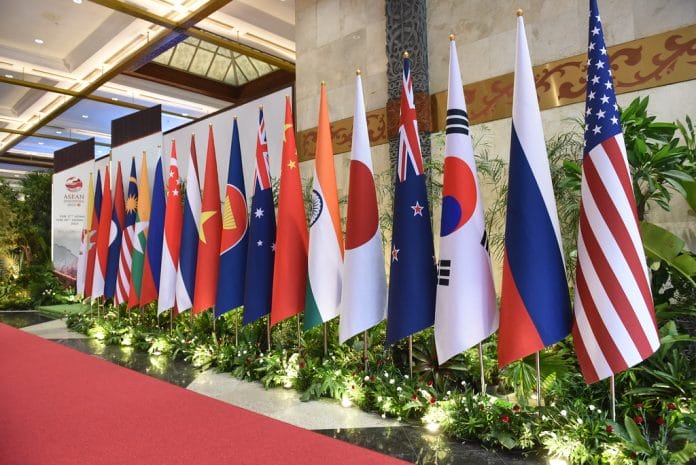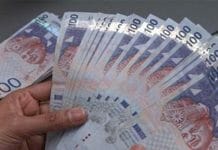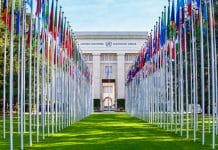By: Collins Chong Yew Keat
ASEAN has been the key focus in recent weeks, with efforts by external powers to engage with the regional organization and reinforcing regional relevance and presence.
New Zealand’s drive to elevate the Comprehensive Strategic Partnership (CSP) with ASEAN reflects critical new drives.
New Zealand (NZ) is focusing on key areas of critical importance to the country’s next century of survival and geopolitical planning amidst new power threats and simultaneous non-traditional threat settings.
For these two factors, they are intertwined with ASEAN and the region serving as both the buffer and the potential threat to NZ.
Wellington will need assurances in both energy and food security, and at the core of these is the resilience of the region in supporting long term supply chain assurances and stability.
The CSP is meant to ensure that there is credible support and fallback platform for NZ in ensuring its economic and trade prosperity is not left out and to have a strong alternative compared to traditional Western partnerships.
NZ realizes that the ASEAN region has been the most promising in future economic growth and also as the base for the top companies and economic players in treating it as the credible and strategic alternative to China
With top firms’ exodus from China and the lure of the region as the hub for critical sectors especially semiconductor, EV, green energy and economy, supply chain hub, and others, NZ will not want to be left out in terms of reaping the spillover economic and development impact.
NZ will also want to boost ties as it will need the region to stay stable and as a buffer to potential threats from China.
With increased presence in Pacific Island states, NZ is wary of Beijing’s ambitions in the region and by having a more unified ASEAN and with greater Western presence both in military and economic and trade terms, NZ can mitigate these threats and concerns with greater role in maritime security and providing a presence in trade route security in this region, which will send a message to both the region and to China that it still has the leverage and alternative options in working with vital partners to keep Beijing in check.
NZ is vital to send a message to Beijing that it has a wider option that is not confined to the region alone, and Hanoi can use NZ as a leverage to its policies with Beijing especially on South China Sea in using NZ as a new partner in the Pacific Island zone.
Vietnam’s New Role
Hanoi can also be seen as a regional leader in initiating closer security and economic ties with NZ, knowing that this can have a new boost to Hanoi’s regional soft power diplomacy.
Hanoi is needed by NZ to have food security assurances, also as a promising player in new critical sectors including green energy and new economic structure.
Vietnam also is seen as the most vital Mekong region player, and NZ will need that to counterbalance and use it as a new leverage against China.
Hanoi can use this as a new quid pro quo in strengthening presence in the southern hemisphere of Indo Pacific and providing new leverage in dealing with both Beijing and West in the Pacific Islands, offering new insights to both Australia and NZ in dealing with Beijing on the increased influence seeking activities in Pacific Island states.
ASEAN Future Forum
The Forum held in Hanoi is meant to build on new narratives in the future of policymaking and focus areas in the region in the new 2045 vision.
It reflects the new drive by Vietnam to reassert narrative and leadership.
The ASEAN Future Forum aims to become an annual multi-stakeholder, track 1.5 dialogue platform for open and constructive dialogues on the future of ASEAN.It is oriented towards non traditional threat settings and in encouraging deeper intra regional collaborations across traditional and non traditional dimensions in facing unconventional threats.
This is different from the traditional power and security settings that deal with current and future hard power threats and the risks in disputed flash points.
Hanoi tries to be the new power dealer in redirecting regional focus on people led and people based development and peace and stability, fostering socio-economic and technology driven development and future agenda.
The absence of a mainly hard power and security agenda reflects the strategic intent by Hanoi to avoid stumbling blocks and repercussions in the form of both internal ASEAN divide and factions in slowing down regional cohesion, and to avoid Beijing and Washington’s continuous regional strategic actions plans.
Vietnam is leading a regional soft power move to focus the narratives on people oriented, reality-based and future driven growth and focus areas that will be able to generate common understandings, and easier to drive regional agreement, cooperation and understanding.
New Leadership Coordination in Critical Areas
Vietnam can further focus on joint existing positive collaborations in new sectors including energy, food, climate, carbon, technology, digital and e-commerce to further build ties and deeper people to people relations between both countries
As the partnerships in these areas will foster more meaningful relations among the business community, education and research, and lay people, Vietnam will be able to increase comprehensive presence
By focusing on non traditional threats and joint vulnerability in climate impact, energy and good security and supply chain resilience, both countries can capitalize on low hanging fruits, and have a safer passageway in pushing ASEAN to move faster and deeper in parallel terms on these issues, and avoiding the hard power divide and dilemma to jeopardise the momentum of the new visions.
Regional strategic calculations remain fluid, interwoven with competing and conflicting power plays and strategic manouvres by both internal and external powers.
The author is Foreign Affairs, Strategy and Security Analyst, Universiti Malaya









